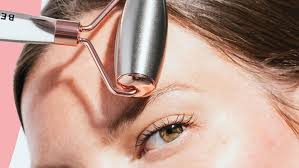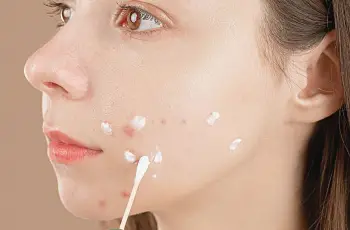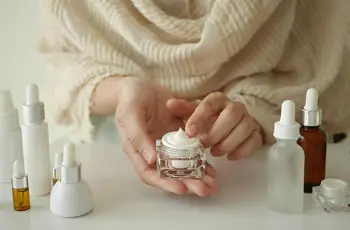
Do Microcurrent Facial Devices Really Work? The Science, Benefits, and What You Should Know
Microcurrent facial devices have taken the beauty world by storm.
From TikTok tutorials to celebrity skincare routines, these handheld gadgets promise younger, firmer, and more radiant-looking skin—without stepping foot in a clinic.
But do they actually deliver on these bold claims?
Devices like NuFace are some of the most popular on the market. They’re sleek, techy, and come with hefty price tags. You’ve probably seen them labeled as “non-surgical facelifts.”
The question is: are they worth your money?
Let’s break down what these devices are, how they work, the science behind them, and whether they belong in your skincare lineup.
What Is a Microcurrent Facial?
A microcurrent facial uses low-level electrical currents to stimulate the skin and underlying facial muscles. These tiny currents mimic the body’s own natural electrical activity.
Originally, microcurrent technology was used in medical treatments during the 1970s to improve muscle tone in patients with facial paralysis.
Over time, doctors noticed another side effect: improved skin appearance.
This eventually led to microcurrent therapy making its way into cosmetic treatments in spas and dermatology clinics.
Today, you no longer need to visit a clinic to try it. Brands like NuFace have developed FDA-cleared devices for safe, at-home use.
How Do Microcurrent Devices Work?
Microcurrent devices deliver electrical pulses—usually under 1 milliampere (mA)—to the skin. These gentle pulses target the muscles and skin cells beneath the surface.
The idea is that, just like your body uses electricity to communicate between nerves and muscles, the device can stimulate similar biological processes, leading to rejuvenation and repair.
One key concept that explains how microcurrents work is the Arndt-Schulz Law, which suggests that small amounts of stimulation can enhance biological activity, while too much can have the opposite effect.
In other words, less is more when it comes to microcurrent.
The Science: What’s Actually Happening in Your Skin?
The science behind microcurrent facials focuses on cellular energy. Specifically, these treatments can boost the function of the mitochondria, the powerhouses inside your cells.
Why does that matter?
Because energized mitochondria lead to increased production of ATP (adenosine triphosphate)—your cells’ energy source.
This, in turn, helps support the creation of important skin proteins like collagen and elastin.
Some research even suggests microcurrent therapy can boost ATP levels by up to 500%, though more studies are needed to confirm this across various device types.
Here’s what increased ATP can do:
Support faster skin cell turnover, Promote collagen and elastin synthesis, Boost circulation, Improve lymphatic drainage, Help with muscle toning in the face
The result? Skin that appears smoother, firmer, and more lifted—at least temporarily.
What Can Microcurrent Facials Treat?
Microcurrent facial devices aren’t magic wands, but they may help improve several common skin concerns over time:
Sagging Skin
Microcurrents help stimulate muscles beneath the skin’s surface, giving a subtle lifting effect.
Fine Lines and Wrinkles
Improved ATP production supports collagen development, which can reduce the appearance of fine lines and improve elasticity.
Puffiness
Better lymphatic drainage may reduce puffiness, particularly around the eyes and jawline.
Uneven Skin Tone
Enhanced circulation brings more oxygen and nutrients to the skin, leading to a brighter, healthier complexion.
Are the Results Permanent?
Not exactly.
The effects of an at-home microcurrent facial are temporary. Most users report that results last for 1 to 3 days, meaning consistency is key.
For lasting benefits, you’ll need to use the device regularly—usually 5 to 6 times per week at the beginning, tapering down to 2 to 3 times weekly for maintenance.
What Does the Research Say?
Scientific studies are still catching up when it comes to beauty devices. Most microcurrent research focuses on medical uses, like wound healing and muscle rehab.
However, emerging studies support their cosmetic potential, too:
Improved Muscle Tone
Microcurrent stimulation can act like a gentle “workout” for facial muscles, improving firmness and definition over time.
Accelerated Healing
Clinical studies show microcurrent can encourage skin repair by guiding skin cells to injured or damaged areas.
Anti-Aging Effects
Small-scale studies suggest improved collagen production and wrinkle reduction after consistent use.
That said, more large, long-term clinical trials are needed to fully understand the anti-aging benefits of at-home microcurrent devices.
Downsides of Microcurrent Devices
No skincare tool is perfect—and microcurrent facial devices come with a few drawbacks:
❌ Temporary Results
You’ll need to commit to regular use to maintain your results.
❌ Time Commitment
Each session can take 5–20 minutes, depending on the device and area treated.
❌ Cost
Popular models like NuFace Trinity can cost $200 to $500, not including attachments or gels.
❌ Possible Irritation
Some users experience redness, tingling, or mild discomfort, especially on sensitive skin.
Who Should Avoid Microcurrent Facial Devices?
While safe for many people, microcurrent isn’t for everyone. Avoid these devices if you:
Have a pacemaker or any electronic implants
Are pregnant, Have epilepsy or seizures, Recently had Botox or fillers (wait 2–3 weeks), Have open wounds, cystic acne, or extremely sensitive skin
When in doubt, always check with your dermatologist before starting a new treatment.
Popular Microcurrent Devices on the Market
If you’re ready to try one out, here are a few top-rated devices:
⭐ NuFace Trinity
FDA-cleared
Interchangeable attachments for different areas, Great for facial contouring
⭐ NuFace Mini+
Compact version of Trinity, More affordable, Travel-friendly
⭐ ZIIP Beauty Nano Current Device
Uses both microcurrent and nanocurrent technology, Controlled via smartphone app
⭐ FOREO Bear
Offers T-Sonic pulsations with microcurrent, Sleek, ergonomic design
All of these require conductive gel to work properly. Without it, the current won’t transmit effectively to your skin.
Final Verdict: Are Microcurrent Devices Worth It?
Yes—if your expectations are realistic.
Microcurrent facial devices can be a helpful addition to your anti-aging skincare routine. They may help you look more lifted and refreshed—especially with consistent use.
But they’re not a replacement for clinically proven ingredients like retinol, peptides, vitamin C, and sunscreen.
Think of a microcurrent device as a supplement to good skincare, not a shortcut to perfect skin.
If you’re curious and have the budget for it, these devices can be a fun, high-tech way to pamper yourself and support your skin goals.
Quick Recap: Pros & Cons
Pros Cons
Lifts and firms skin temporarily Effects fade after 1–3 days
Supports collagen and elastin Requires daily or regular use
Improves circulation and tone Devices can be expensive
Can be used at home Not suitable for everyone
Want Personalized Anti-Aging Advice?
Not sure if a device is right for your skin type or routine? Take a quick Skin Type Quiz to discover your unique skin needs and build a targeted plan with or without devices like NuFace.


